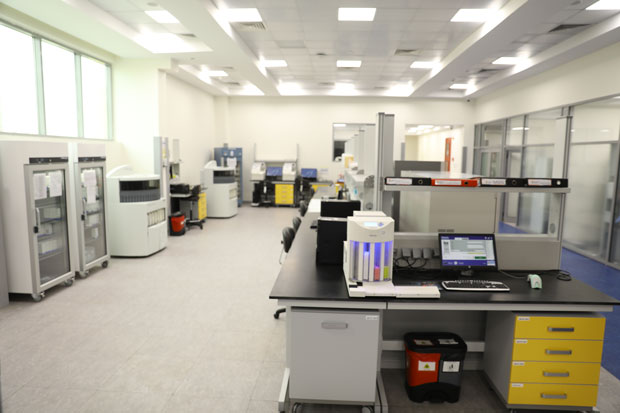11q aberrations

- Clinical Implications
- Diagnosis of Burkitt-like (BLL) lymphoma with 11q aberration
- Test Description
- Reporting name
- Test prerequisites (To ensure timely results)
- Patient’s demographic data.
- Clinicopathologic information:
- Pathology report (final or preliminary) including anatomic location.
- History of any given therapy for cancer and its date and relation to sample sent for molecular study (i.e. pre & post therapy). Therapy includes chemo and radiotherapy, hormonal or targeted therapy.
- Any other relevant clinical data or history.
- Type of sample:
- Preferred: Formalin-fixed, paraffin-embedded (FFPE) tumor tissue block.
- Acceptable:
- Section in Eppendorf: Up to 4 sections, each with a thickness of up to 10 μm and a surface area of up to 250 mm2 + good H&E slide for assessment.
- Five unstained slides + one good H&E slide.
- Specimen Minimum Volume: Two 10-micron sections of FFPE
- Quality Control measures
- From your side:
- Double check you are fulfilling all required data before sending your sample.
- Check that your pathologist has selected the best block in terms of tumor cellularity, with least presence of necrosis and inflammation.
- Pretherapy sample is preferred (if underwent any cancer therapy).
- In our lab:
- Assessment of tissue for adequacy & tumor cellularity before any molecular analysis.
- Matching block ID with the report ID and demographic data.
- Matching the submitted block with the data reported in the pathology report.
- N.B.
- If the sample sent in Eppendorf, it is your pathology lab’s responsibility to ensure the sample in Eppendorf is corresponding to the submitted H&E slide (we can’t prepare slide from Eppendorf).
- This test does not include a pathology consultation.
BLL-11q: initially recognized as a particular subset of HGBCL that had an expression profile and some pathological characteristics similar to those of Burkitt lymphoma but lacked MYC-translocations & alternatively shared a common pattern of 11q23 gains & 11q24- qter loss.
Real-Time Polymerase Chain Reaction (qPCR).
11q23 & 11q24 Aberration Analysis
All samples are subject to stringent quality control measures that include:
From 3 days to 5 working days.
Client provided paraffin blocks, Whole Blood EDTA and unstained slides (if provided) will be returned after testing is complete.
- Salaverria I et al: A recurrent 11q aberration pattern characterizes a subset of MYC-negative high-grade B-cell lymphomas resembling Burkitt lymphoma. Blood. 123(8):1187-98, 2014
- Gonzalez-Farre B, et al; Burkitt-like lymphoma with 11q aberration: a germinal center-derived lymphoma genetically unrelated to Burkitt lymphoma. Haematologica. 2019;104(9):1822-1829, 2018